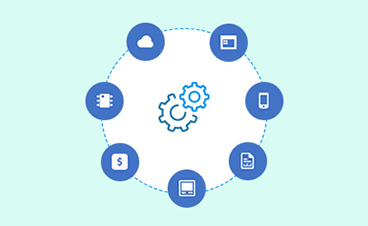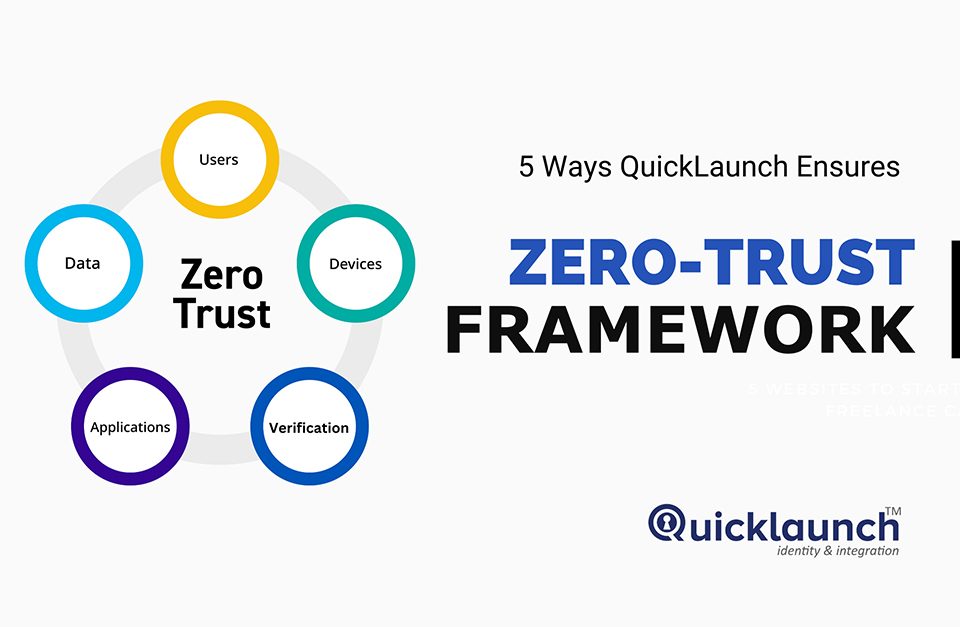
Why is it Important for an SSO to be Self-Service?
February 22, 2018
6 Things to Do To Keep Your Users, Data & Apps Safe – World Password Day Special #LAYERITUP
May 3, 2018Single Sign-On Software is known to eliminate identity management pains, by a large extent, by letting users access all their essential apps through a single set of credentials. This means that secure access is provided to the users through a mechanism that is fool-proof, easy to use and easy to get set going. Before we look at the essential features you need to look out for while choosing an SSO tool, let us briefly touch upon what a Single Sign-On software is.
What is Single Sign-On?
Single Sign-On is a service that lets users use a single credential to access multiple applications. While it makes life easy for your users who would otherwise have to toggle multiple windows to access multiple applications and use multiple usernames and passwords, it also provides centralized control in the backend to the IT teams. This control enables IT teams to enable or disable access to different accounts, detect application usage patterns, prevent unauthorized access to applications, and protect sensitive data that resides in these applications. Single Sign-On Software is a software tool that provides you single-click access to these applications.
Single Sign-On Software – Essential Features
When it comes to something as critical as Single Sign-On software, it gets a lot trickier because of the stakes involved. Single Sign-On software is typically used to grant users single-click access to the applications they need to access, through federation. But, when there is a plethora of choices in the market, which software would you choose? What will be your selection criteria so that you get the best one to suit the needs of your organization? Here are the 7 essential features that you need to look for in an SSO software:
1. Cloud-Based Single Sign-On Software
The entire realm of Enterprise IT is shifting towards the cloud. This massive shift began almost a decade ago and most of the Enterprise applications from timesheet tracking, Sharepoint, CRM, ERP etc. have moved to the cloud. More and more enterprise applications are getting on to the cloud with each passing day. The present and the future of IT software is majorly in the cloud. Make sure that your Single Sign-On software is not let behind. Cloud SSO software means that you do not have to worry about manageability and availability. To go for a Single Sign-On software that doesn’t have cloud support is in a certain sense regressive. Eliminate vendors that do not have cloud support while you are evaluating an SSO tool.
2. Multiple Applications Support
As we all know, one of the major reasons to choose Single Sign-On as a solution is to ensure that your users get instant access to all the applications they need in one single click. This means that the vendor should have native support for multiple applications failing which giving Single Sign-On access to many essential applications would become cumbersome. This also depends on the organization’s existing application landscape. If the tool offers support for applications that you currently use and are likely to use, in the foreseeable future and the vendor has a track record of continuously increasing the supported applications portfolio, that should be your vendor of choice.
3. Mobile Support
Enterprise mobility is here to stay. With the number of gadgets and wearables taking over our entire lives, notwithstanding work alone, the paradigm of work has surpassed the perimeter of the desktop and even the physical office campus. The mobile has taken a position of supreme importance and users access work-related applications through their mobile devices. Organizations are embracing BYOD rapidly and it is important to provide access to users from their mobile devices through Single Sign-On software.
4. Deep AD Integration
Active Directory is where the data pertaining to user accounts and credentials resides. It is a key to provision authentication and authorization to users at different levels for different applications. It is important for your Single Sign-On software to be able to operate on top of the AD so that while adding each new app, you do not have to touch the AD. Seamless integration with the AD would make sure that your Single Sign-On is completely hassle-free.
5. Pay-As-You-Go Pricing
While delivering a seamless & secure access to your users is essential, what is the cost of that offering? Would you want to shell out tens of thousands of dollars with months of professional consulting? Or would you go for a rather fair priced product based on usage? A Single Sign-On product typically is charged based on users while one needs to remain aware of the fact that not all your users are expected to use the product simultaneously. Usage-based, pay-as-you-go pricing would be a cost-effective way of achieving Single Sign-On. This helps you justify the investment you have made on the tool to streamline the signing on experience.
6. Self-Service Single Sign-On
DIY is the way Enterprise IT software is heading. Typically, Enterprise software is reaching a point where IT teams could sign-up for a product, get started with minimum-to-no assistance, pay online and go LIVE. Gone are those days when one engaged with an army of professional consultants or implementation partners who are billed by the hour. It is not just expensive but the implementation cycles tend to get painfully long. Self-service software helps a great deal in overcoming this problem by enabling users to set up and run the tool in a series of intuitive steps that are easy to carry out. This also means that there should be extremely good documentation in place to guide them through the set-up and run the Single Sign-On tool.
7. Reports & Analytics
Proactive IT teams are always on top of what’s going on with their resources. In the sphere of Identity & Access Management, this boils down to metrics such as active users, active sessions, active accounts etc. These reports need to have the capability to provide you with vital information encompassing these metrics. At any point of time, your reports should tell you which users are on which applications, their signing in pattern etc. that will help a great deal in identifying unnatural patterns thereby preventing unauthorized access to applications that may contain sensitive data. Analytics is making teams smarter with predictive insights thereby helping them stay ahead of the game as against playing catchup. While investing in a Single Sign-On software, ensure that it has extensive, intuitive, insightful reporting and analytical capabilities.
Ensure that your evaluation criteria includes these 7 above-mentioned aspects while choosing an SSO tool for your organization so that you get the best out of your Single Sign-On initiative.




